Construction General Permit (CGP) in California: Step-by-Step Compliance Guide
Construction projects play a vital role in shaping California’s growing communities, but they also bring environmental responsibilities—especially when it comes to managing stormwater. During grading, excavation, and site development, loose soil, debris, and pollutants can easily be washed into storm drains by rainfall. To protect the state’s water resources, California enforces a regulatory requirement known as the Construction General Permit (CGP).
Table of Contents
ToggleThe California State Water Resources Control Board issues the CGP, which applies to most construction projects that disturb an acre or more of soil—or are part of a larger development plan that does. If your project meets this criteria, you must legally follow specific rules designed to prevent stormwater pollution.
But understanding how, when, and where the CGP applies isn’t always straightforward. With recent updates to the permit in 2022, new monitoring rules, stricter timelines, and technical documentation requirements have made compliance more complex.
This guide was created to simplify the process for developers, builders, consultants, and property owners. Whether you’re breaking ground on a new subdivision, adding a commercial facility, or overseeing a public works project, this guide will walk you through:
Who needs coverage under the Construction General Permit
What’s required under the 2022 permit
How to properly develop and implement a Storm Water Pollution Prevention Plan (SWPPP)
The latest compliance timelines and transition deadlines
Common pitfalls to avoid and how to stay in compliance
Useful resources and support options
If you’re navigating stormwater permitting for the first time—or just need to understand the latest regulatory changes—this is your go-to reference for California’s Construction General Permit.
🛠️ CGP Compliance Flowchart
- Check if your project disturbs 1+ acre of land.
- Develop a Stormwater Pollution Prevention Plan (SWPPP).
- File a Notice of Intent (NOI) with the State Water Board.
- Receive your Waste Discharge Identification Number (WDID).
- Implement Best Management Practices (BMPs).
- Conduct ongoing inspections and reporting.
- Submit a Notice of Termination when the project ends.
What Is the Construction General Permit?
The California State Water Resources Control Board issues the Construction General Permit (CGP) to prevent stormwater pollution from construction sites. When construction activities disturb soil—such as grading, digging, or clearing—rain can wash the loose soil, along with chemicals or debris, into nearby creeks, rivers, or storm drains. This runoff can severely damage water quality and aquatic habitats over time.
To align with the federal Clean Water Act, the Board developed the CGP to ensure California’s construction industry actively manages pollution. If your construction project meets certain size or scope requirements (outlined below), you must comply with this permit before breaking ground.

Why It Matters
Stormwater runoff might seem harmless—after all, it’s just rainwater, right? But on active construction sites, it’s a different story. Stormwater can become contaminated with:
Sediment and debris
Concrete washout
Paints and solvents
Oils and fuels
Trash or hazardous materials
Without proper controls in place, all of this can wash directly into California’s storm drain system—which leads straight to rivers and the ocean without treatment.
That’s why the Construction General Permit isn’t just a formality—it’s a key part of California’s water protection efforts.
Who Needs Coverage Under the Permit?
The California Construction General Permit applies to a wide range of construction projects—not just large-scale developments. If you’re moving dirt, there’s a good chance you’ll need this permit.
You Need the Permit If:
Your construction activity disturbs one acre or more of soil.
OR your project is less than one acre, but it’s part of a larger common plan of development (such as a housing tract or business park) that in total disturbs one or more acres.
This includes:
Residential construction
Commercial development
Industrial and infrastructure projects
Government or public agency construction
It doesn’t matter if the construction is temporary, staged, or being developed in phases. If your site meets the acreage threshold, the permit applies.
You Do Not Need the Permit If:
There are some exemptions built into the rules. You do not need CGP coverage if your activities are:
Agricultural in nature (like growing crops)
Related to soil prep for farming—such as disking, plowing, harrowing, terracing, or leveling
Not creating new impervious surfaces or disturbing soil (e.g., internal remodeling with no ground disturbance)
Still unsure if your project qualifies? It’s always best to check Section II.B of the permit for a full list of exclusions, or consult with a permit expert.
🌧️ What’s in Stormwater Runoff?
- 🚧 Loose Soil → Sediment pollution
- 🛢️ Oil & Grease → Harmful to aquatic life
- 🧪 Chemicals → Toxic to water bodies
- 🗑️ Trash & Debris → Blocks drainage systems
Runoff can travel miles and harm rivers, creeks, and wildlife.
What the Permit Requires
Once you’ve confirmed your project needs CGP coverage, the next step is understanding what the permit actually requires. At the heart of it is the development of a Storm Water Pollution Prevention Plan (SWPPP)—a detailed site-specific plan for controlling stormwater and preventing pollution during construction.
Here’s a breakdown of the key components:
Prepare a SWPPP (Storm Water Pollution Prevention Plan)
A SWPPP is mandatory for all permitted projects and must be prepared by a certified Qualified SWPPP Developer (QSD). This plan outlines exactly how your site will manage stormwater using Best Management Practices (BMPs).
The SWPPP includes:
Site description & construction schedule
Drainage patterns and slopes
Erosion and sediment control methods
Pollution source identification
BMP selection and maintenance plan
Inspection and reporting schedule
Once completed, the SWPPP must be kept on-site at all times during active construction and updated if the project changes.
Pro tip: A poorly prepared or incomplete SWPPP is one of the most common reasons for non-compliance penalties. Always work with a certified QSD.
Implement Best Management Practices (BMPs)
BMPs are the tools, structures, and processes you put in place to stop pollution before it enters stormwater. They fall into different categories depending on their purpose.
Common BMP Types:
Erosion control (e.g., hydroseeding, straw blankets)
Sediment control (e.g., silt fences, gravel bags)
Runoff control (e.g., berms, check dams)
Material and waste management (e.g., covered storage, washout bins)
Your project will likely need a combination of BMPs, depending on location, slope, soil type, weather, and nearby water sources. The SWPPP will spell this out in detail.
Submit the Notice of Intent (NOI) and Obtain a WDID
Before construction begins, you must file a Notice of Intent (NOI) online through the Storm Water Multiple Application and Report Tracking System (SMARTS). This includes uploading your SWPPP, paying applicable fees, and providing project details.
Once the state processes your submission, you’ll receive a Waste Discharge Identification Number (WDID)—your confirmation that the project is now legally covered under the Construction General Permit.
Note: You must post your WDID number on-site where it is visible to inspectors and the public.
2022 Construction General Permit Update: What’s New and When It Applies
California’s updated Construction General Permit (CGP) went into effect on September 1, 2023. This new version replaces the older 2009 permit and brings in stronger rules to protect water from construction-related pollution.
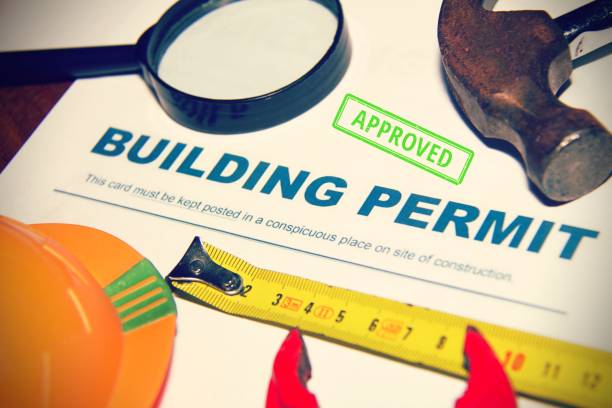
If you’re a builder, developer, or property owner, it’s important to understand when this new permit applies to you and how to stay in compliance.
Why the Permit Was Updated
The 2009 permit had been in place for over a decade. Since then, new research, better technology, and growing environmental concerns led the State Water Board to revise the rules. The 2022 update includes:
Clearer instructions for pollution prevention
Stricter monitoring and reporting standards
Better protection for nearby waterways and ecosystems
Improved use of Best Management Practices (BMPs)
Key Transition Dates You Need to Know
The state didn’t switch everyone over to the new permit all at once. Instead, it created a three-stage transition plan based on when your project started and whether you make any changes to it.
September 1, 2023: New Projects Must Use the 2022 Permit
If your project received a Waste Discharge ID number (WDID) on or after September 1, 2023, you are automatically required to follow the 2022 permit.
This means you must:
Prepare your SWPPP using the new 2022 format
Use the updated BMP standards
Follow the latest inspection and reporting rules
No exceptions—new projects fall under the new rules.
September 1, 2023 to August 31, 2025: Transition Window for Older Projects
If your project was already covered under the 2009 permit, you can continue with it—for now. But if you make changes to the project during this time, you’ll have to switch to the 2022 permit.
This includes:
Adding more disturbed land (increasing acreage)
Submitting a new SWPPP or changing the existing one
Filing a Change of Information form
In short: as long as your project stays the same, you can finish under the 2009 permit. But if anything changes, you’ll need to transition to the 2022 rules.
September 1, 2025: Full Switch Required
After this date, the 2009 permit will be shut down. All active construction projects in California must be covered under the 2022 Construction General Permit.
This means:
You must either close out the project by submitting a Notice of Termination (NOT)
Or officially switch your project to the 2022 permit requirements
If you don’t, the State Water Board may terminate your coverage and issue penalties for non-compliance.
What’s Different in the 2022 Permit Compared to the 2009 Permit
The 2022 Construction General Permit brings several important changes that affect how construction projects manage stormwater. While the core goal remains the same—preventing pollution from construction runoff—the updated permit introduces new standards, risk classifications, and responsibilities.
Understanding these differences will help project owners and consultants avoid compliance issues.
New Risk Categories and Evaluation Process
Under the 2022 permit, the risk assessment process has been updated to better reflect site-specific threats to water quality.
Key updates include:
A new Risk Level 4 for highly sensitive or high-impact projects
More detailed evaluation factors (soil type, slope, proximity to impaired water bodies)
Expanded requirements for monitoring and reporting for higher-risk sites
Projects are no longer assigned a risk level based only on location and rainfall—they must now account for a broader range of environmental factors.
Updated Sampling and Monitoring Requirements
The new permit has stricter rules around sampling stormwater discharge and documenting conditions on site.
Major changes include:
Increased frequency of visual inspections during and after rain events
More specific requirements for turbidity and pH sampling
New training requirements for those collecting and reporting water samples
These updates are designed to catch issues early and prevent runoff problems before they escalate.
Emphasis on Post-Construction Requirements
While the 2009 permit focused heavily on the construction phase, the 2022 permit places more weight on post-construction stormwater management.
This includes:
Requirements to plan for long-term runoff control (not just during construction)
Mandatory documentation of permanent BMPs that will remain in place
Coordination with local MS4 (Municipal Separate Storm Sewer System) programs
This shift ensures sites remain environmentally safe long after the building phase is complete.
Technology and Documentation
The updated permit strongly encourages use of digital tools for managing compliance. Projects are expected to maintain real-time records in SMARTS, and reporting templates have been redesigned to streamline documentation.
Contractors must also meet new training and certification standards for Qualified SWPPP Practitioners (QSPs) and Developers (QSDs).
2023 BMP Handbook and Updated SWPPP Requirements
In alignment with the new 2022 permit, the California Stormwater Quality Association (CASQA) released a revised version of its Construction Best Management Practices (BMP) Handbook in 2023. This handbook is the primary reference for selecting, installing, and maintaining BMPs that prevent stormwater pollution on construction sites.
What Is the BMP Handbook?
The BMP Handbook is a technical guide that outlines practical solutions for stormwater management. It provides detailed instructions and diagrams for each type of BMP and helps project teams understand:
When a BMP is appropriate
How to install it correctly
How to inspect and maintain it over time
It is widely used by contractors, consultants, and public agencies across California.
Note: The 2023 version is only accessible to CASQA subscribers.
Key Updates in the 2023 Handbook
The newest version of the handbook was updated to match the 2022 CGP. Key improvements include:
Clearer BMP categories and applications
Enhanced guidance for linear and phased projects
Expanded maintenance and inspection procedures
Integration with new risk levels and sampling protocols
There is also a greater emphasis on non-structural BMPs, such as good housekeeping and materials management.
How the SWPPP Is Affected
With the permit changes and updated BMP standards, your Storm Water Pollution Prevention Plan (SWPPP) must now:
Follow the 2022 CGP formatting and structure
Include the revised BMPs from the 2023 Handbook
Clearly link site activities to specific pollution prevention measures
Identify trained personnel (QSPs and QSDs) responsible for inspections and documentation
Failure to align your SWPPP with these new standards could lead to permit violations or delays in project approvals.
How to Apply for the Construction General Permit
Once you’ve determined that your project requires coverage under the Construction General Permit (CGP), your next step is to officially apply through the State Water Board’s online system. The process is digital, and all documentation must be submitted using the Storm Water Multiple Application and Report Tracking System (SMARTS).
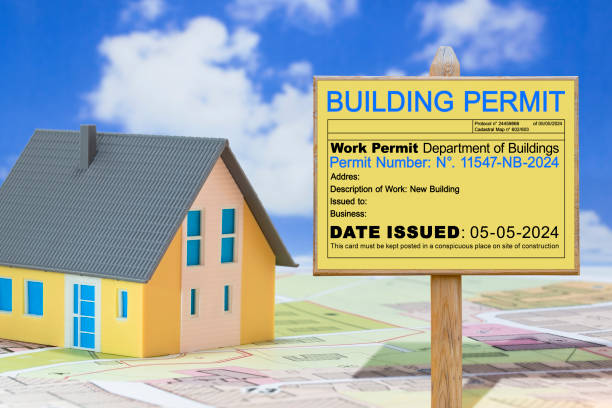
Here’s how to navigate it from start to finish.
1st Step: Confirm Eligibility and Project Details
Before starting the application, make sure you have:
A site that meets CGP criteria (1+ acre of disturbance or part of a larger development)
A SWPPP prepared by a certified Qualified SWPPP Developer (QSD)
Project information such as site address, acreage, parcel numbers, and schedule
You’ll also need to designate a Legally Responsible Person (LRP)—usually the project owner or authorized representative—who will submit and certify all documents.
2nd Step: Register in SMARTS
The SMARTS platform is used for:
Submitting applications (Notice of Intent)
Uploading your SWPPP
Paying the annual fee
Reporting inspections and storm events
Filing amendments or terminations
If you’re a new user, you’ll need to create an account. You’ll also link your QSD and QSP contacts so they can access and update the project information.
3rd Step: Submit the Notice of Intent (NOI)
Once your account is active, the LRP can file a Notice of Intent (NOI), which is your formal request for CGP coverage. Along with the NOI, you must:
Upload your SWPPP document
Provide detailed site information and drainage features
Identify BMPs being used
Pay the annual fee, which is based on your project’s risk level
Once the State Board reviews and accepts your NOI, they will issue your Waste Discharge Identification Number (WDID), confirming that your project is officially covered under the permit.
4th Step: Start Construction and Maintain Compliance
You must display the WDID number onsite, usually on a job site sign or permit board. From here, your compliance responsibilities include:
Installing and maintaining BMPs
Performing required inspections and sampling
Keeping daily records of site activities
Reporting storm events and uploading monitoring data in SMARTS
All SWPPP updates, personnel changes, or project modifications must also be submitted through the SMARTS system.
❓ Quick Quiz: Which project needs CGP coverage?
Common Mistakes That Lead to Non-Compliance
Even with good intentions, many projects fall out of compliance with the Construction General Permit due to a few common errors. Avoiding these issues can save time, money, and prevent enforcement actions from state regulators.
1st Mistake: Not Preparing a SWPPP Before Applying
Some project owners mistakenly think they can start construction before the SWPPP is finalized. Under the permit rules, you must have a complete SWPPP ready before submitting your NOI—and certainly before any site work begins.
2nd Mistake: Assuming Small Sites Are Exempt
If your site disturbs less than an acre, you may assume you’re in the clear. But if it’s part of a larger development—like a housing subdivision—you still need permit coverage if the combined disturbance is one acre or more.
Always assess your site within the context of the full project plan.
3rd Mistake: Incomplete BMP Installation
It’s not enough to list BMPs in your SWPPP—you must actually install and maintain them. Sites with missing or poorly maintained BMPs are common targets for inspection violations.
Pay attention to:
Proper placement of silt fences and fiber rolls
Containment of concrete washout areas
Covered storage for materials and chemicals
4th Mistake: Forgetting to Transition to the 2022 Permit
If your project began under the 2009 permit, it may still be operating legally. But remember, if you:
Add acreage,
Submit a Change of Information form,
Or go beyond August 31, 2025—
Then you are required to transition to the 2022 permit. Failing to do so will result in your WDID being terminated.
5th Mistake: Not Reporting Storm Events Properly
Stormwater sampling must be conducted during qualifying storm events. If it rains and you’re required to collect samples but fail to report, you could face a notice of violation. Make sure your Qualified SWPPP Practitioner (QSP) is trained and ready to handle monitoring.
Helpful Resources for Permit Compliance
Navigating stormwater regulations can feel overwhelming, but there are several official tools and support systems available to help project teams comply with California’s Construction General Permit.
Below are the most reliable and frequently used resources:
SMARTS (Storm Water Multiple Application and Report Tracking System)
The SMARTS platform is the central online system used to manage your permit coverage. You’ll use it to:
Submit your Notice of Intent (NOI)
Upload your SWPPP
Report inspections and rain events
File a Notice of Termination (NOT)
Track all compliance documents in real time
Access the SMARTS portal here:
https://smarts.waterboards.ca.gov
CASQA BMP Handbook (2023 Edition)
The California Stormwater Quality Association (CASQA) publishes the official BMP Handbook used across the state. The 2023 update aligns with the 2022 permit and provides:
Guidance for selecting and maintaining BMPs
Design specifications
Site-specific recommendations
Note: Full access to the handbook requires a CASQA membership. Learn more:
https://www.casqa.org/resources/bmp-handbooks
QSP and QSD Certification Resources
Only certified professionals can prepare or manage SWPPP documents. Certification programs are managed by CASQA-approved trainers and are required for:
Qualified SWPPP Developers (QSDs) – who create the SWPPP
Qualified SWPPP Practitioners (QSPs) – who conduct inspections and reporting
Search training schedules and certification information here:
https://www.casqa.org/resources/qsp-qsd-certification
Final Thoughts
The Construction General Permit is more than a checkbox—it’s a vital part of California’s environmental strategy to protect rivers, lakes, and coastal waters. Whether you’re building homes, infrastructure, or commercial property, stormwater compliance is now a standard part of the project lifecycle.
Failing to understand the permit’s scope and deadlines can result in serious consequences—from fines and delays to stop-work orders. On the other hand, early planning and proper documentation can keep your project on track and in good standing with regulators.
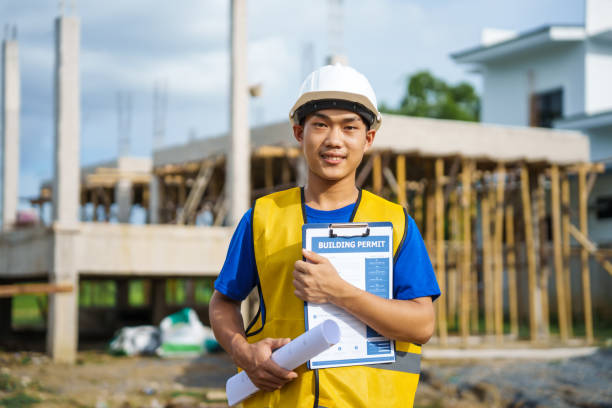
Need Help with Permit Compliance?
If you’re unsure whether your project needs CGP coverage—or if you’re navigating the transition from the 2009 to 2022 permit—we’re here to assist.
Our team at JDJ Consulting Group offers:
SWPPP development and review
Risk assessment support
SMARTS registration and documentation
Project-specific BMP guidance
QSD/QSP support for ongoing compliance
Get in touch to schedule a free consultation and ensure your project meets all state requirements with confidence. Call us at (818) 233-0750 or email us at sales@staging.jdj-consulting.com to discuss your project.
FAQs Regarding Construction General Permit
Who needs coverage under the California Construction General Permit?
Construction projects that disturb one acre or more of land — or are part of a larger common plan of development that cumulatively disturbs one or more acres — require coverage under the CGP. This applies to both private and public sector developments.
You need coverage if:
Your project disturbs 1+ acre of soil.
Your project is part of a subdivision or phased development totaling 1+ acre.
You engage in grading, clearing, or excavation activities that may impact stormwater runoff.
What does the Construction General Permit regulate?
The CGP regulates stormwater discharges from construction sites to protect California’s water quality. It ensures that pollutants like sediment, debris, and chemicals do not contaminate local waterways through runoff.
It addresses:
Soil erosion and sediment control
Runoff from equipment and material storage
Proper waste management on-site
Stormwater monitoring and reporting
What is a Storm Water Pollution Prevention Plan (SWPPP)?
A SWPPP is a site-specific document that outlines how a construction site will control pollutants and manage stormwater. It must be prepared before construction begins by a Qualified SWPPP Developer (QSD).
The SWPPP includes:
Site maps and drainage patterns
Identification of pollutant sources
A list of Best Management Practices (BMPs)
Inspection schedules and reporting procedures
Who prepares and manages the SWPPP?
A Qualified SWPPP Developer (QSD) must develop the SWPPP, and a Qualified SWPPP Practitioner (QSP) manages it on-site.
Key responsibilities:
QSD: Designs the SWPPP and performs risk assessments.
QSP: Oversees implementation, performs inspections, and ensures day-to-day compliance.
Both roles require training and certification through an approved provider.
What are Best Management Practices (BMPs) in construction?
BMPs are practical techniques or devices used to control pollutants in stormwater runoff from construction sites. The goal is to keep soil, chemicals, and debris out of storm drains and water bodies.
Common BMPs include:
Installing silt fences and fiber rolls
Covering soil stockpiles and exposed slopes
Properly managing concrete washout areas
Stabilizing entrances to prevent vehicle tracking
What changed in the 2022 Construction General Permit?
The 2022 CGP, effective September 1, 2023, introduced significant updates that reflect new monitoring technology and more stringent environmental controls.
Key updates:
New risk level calculations based on rainfall intensity
Increased monitoring frequency and reporting obligations
Required digital submissions through SMARTS
New sampling protocols for turbidity and pH
What is SMARTS and how is it used?
SMARTS stands for Storm Water Multiple Application and Report Tracking System. It is the State Water Board’s online portal for submitting permit-related documents and managing ongoing compliance.
In SMARTS, you can:
Submit a Notice of Intent (NOI)
Upload your SWPPP
File annual reports and stormwater sampling data
Submit amendments, changes, and Notice of Termination (NOT)
What is the transition timeline from the 2009 CGP to the 2022 CGP?
The transition from the 2009 to the 2022 CGP follows a three-year schedule:
Important dates:
September 1, 2023: All new projects must file under the 2022 CGP.
Sept 1, 2023 – Aug 31, 2025: Existing projects that modify site acreage must transition to the 2022 CGP.
September 1, 2025: All 2009 CGP coverage will be administratively terminated.
Are agricultural activities subject to the CGP?
Generally, no. Routine agricultural operations are exempt from the Construction General Permit under Section II.B.
Exempt activities include:
Growing crops
Disking, harrowing, or tilling soil
Leveling fields for planting
Other non-construction farming operations
However, if agricultural land is being developed for non-agricultural construction (e.g., housing), the CGP applies.
Do projects under one acre need coverage?
Not always. But if your small project is part of a larger common plan of development that totals one or more acres, you still need coverage.
You may still need a CGP if:
Your project is part of a master-planned community
It’s connected to other adjacent lots under the same development plan
The total soil disturbance across the site exceeds one acre
How do I terminate coverage under the CGP?
To terminate CGP coverage, you must file a Notice of Termination (NOT) in SMARTS. The site must be fully stabilized and meet the final stabilization criteria.
Steps to terminate:
Ensure all construction is complete
Confirm permanent erosion control is in place
Submit final site photos and documentation
File NOT in SMARTS for review and approval
What are the penalties for non-compliance?
Failure to comply with CGP requirements can lead to serious enforcement actions from the State Water Board or regional authorities.
Penalties may include:
Civil fines up to $10,000 per day per violation
Site inspections and corrective action orders
Permit suspension or revocation
Public disclosure of non-compliance in enforcement databases
📣 Need Help Navigating the CGP?
Our consultants can guide you through permit filing, SWPPP development, and inspections.
📞 Get a Free ConsultationWhat is a CGP?
CGP stands for Construction General Permit. The California State Water Resources Control Board issues this permit to regulate stormwater discharges from construction sites that disturb one acre or more of land or are part of a larger common plan of development exceeding that threshold.
Key features of the CGP:
Required for most large-scale construction projects
Aims to prevent sediment, debris, and pollutants from entering storm drains and waterways
Mandates the creation of a Storm Water Pollution Prevention Plan (SWPPP)
Enforced through monitoring, inspections, and reporting in SMARTS
The CGP helps California meet the federal Clean Water Act’s stormwater pollution prevention goals.
What is the general permit for stormwater in California?
California’s General Permit for Stormwater Discharges Associated with Construction and Industrial Activities is a regulatory framework for managing polluted runoff. The two primary general permits are:
Construction General Permit (CGP) – for construction activities
Industrial General Permit (IGP) – for industrial facilities
For construction activities, the General Permit:
Applies to soil disturbance of 1+ acre
Requires a SWPPP and BMPs to control pollutants
Covers a wide range of construction categories: housing, commercial, roads, utilities, etc.
These general permits help protect California’s water bodies by reducing contamination from stormwater runoff.
What is the IGP?
IGP stands for Industrial General Permit, officially known as the Industrial Stormwater General Permit. It regulates stormwater discharges from certain industrial facilities in California under the federal Clean Water Act and state law.
The IGP applies to:
Manufacturing plants
Transportation and logistics hubs
Recycling and salvage yards
Waste treatment facilities
Warehouses with outdoor operations
Permit requirements include:
Preparing a Storm Water Pollution Prevention Plan (SWPPP)
Conducting stormwater sampling and visual inspections
Using Best Management Practices (BMPs) to reduce pollution
Filing annual reports through the SMARTS portal
The IGP is separate from the CGP but follows a similar regulatory approach.



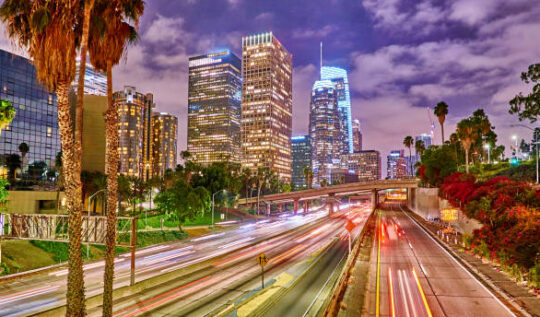

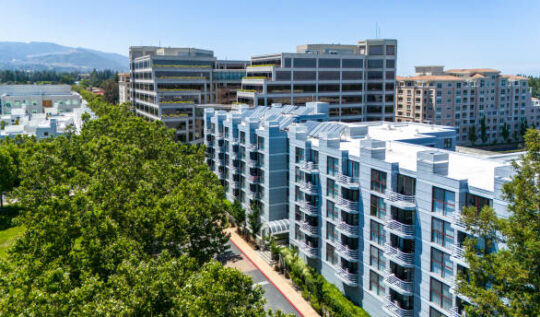
Can You Self-Build a Home in Los Angeles County? | JDJ Guide
July 29, 2025
[…] for and obtain an Owner-Builder Permit through the local Building and Safety […]
When Did Los Angeles Start Subdividing Lots to Build More Homes
August 1, 2025
[…] or look into investing in subdividable lots? Let us know and we can help you dig into zoning codes, permitting steps, and what to watch out […]
RTI Permitting Los Angeles: What It Means and How JDJ Helps
August 5, 2025
[…] JDJ Consulting Group specializes in permit expediting and full RTI coordination in Los Angeles. Our team handles submittals, follow-ups, corrections, and […]